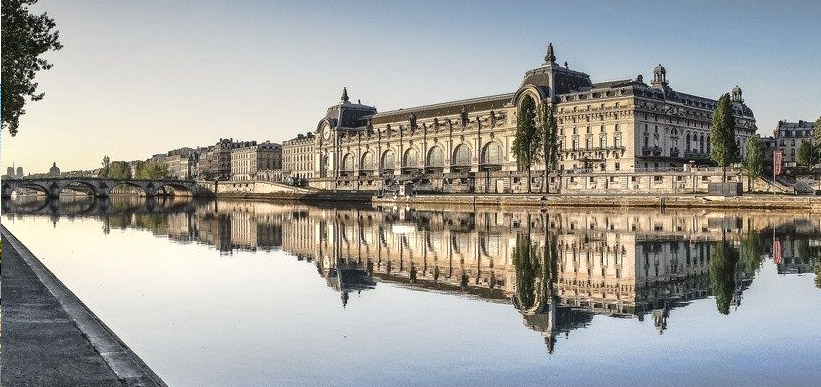Beaux-Arts is an architectural style characterized by theatrics and heavy ornamentation. It was taught at Ecole des Beaux-Arts in Paris from the 1830s to the end of the 19th century. The study of this architectural style was a part of the academic curriculum in architecture at Ecole des Beaux-Arts.
It was inspired by the principles of French Neoclassicism, but also included elements from the Gothic and Renaissance styles. You can find this style mostly in the 19th century buildings. They are the railway stations, museums, banks, and government buildings. Here we’ve listed some of the best examples of this architectural style.
1. Palais Garnier
Located in the 9th arrondissement of Paris, this grand opera house has a seating capacity of 1,979. It was built on the orders of Emperor Napoleon III for the Paris Opera. It was referred to as ‘le nouvel Opera de Paris’ or ‘the new Paris Opera’ initially. Later it came to be known as Palais Garnier. Today, this opera house is mainly used for ballet.
Since 1923, it has been a French national heritage site. It is now one of the world’s most famous opera houses and among the symbolic structures of Paris. Palais Garnier remains one of the most celebrated structures built in Beaux-Arts style of architecture. It also included other architectural styles during its construction.
2. New York Public Library (Main Branch)
It is also called Stephen A. Schwarzman Building. The American businessman and philanthropist had gifted $100 million for its restoration work. This building underwent a major restoration between 2007 and 2011. It was constructed in the Beaux-Arts style by an architectural firm called Carrere and Hastings.
This public library was opened on the 23rd of May 1911. After its opening, the library was visited by 4 million individuals by the 1920s. The building has been featured in many of the films and television shows over the years.
3. San Francisco City Hall
The present building replaced the earlier one destroyed during an earthquake that occurred in 1906. It was constructed as a part of the ‘City Beautiful’ moment, which began in the 1880s and continued until 1917. After 27 years of planning and construction, the original building was completed in 1899.
It was designed by the architects Augustus Laver and Thomas Stent. Following the 1906 earthquake, it was reconstructed and reopened in 1915. The new building’s architect was Arthur Brown, Jr. from the architectural firm Bakewell & Brown. This elegant building is the seat of the city and county government of San Francisco.
4. Musee d’Orsay
Located on the Left Bank of the Seine River, this museum in Paris is one of Europe’s largest art museums. It is housed in a former railway station built in Beaux-Arts style called Gare d’Orsay. There was a drop in its number of visitors in 2020 owing to the COVID-19 pandemic.
Despite this drop, it was the fifteenth most-visited art museums that year. The museum has excellent collections of French art dating back to the mid-19th century. They include sculptures, paintings, photographs, and furniture.
5. Grand Central Terminal
This world-famous landmark is located in Midtown Manhattan in New York City. It is also called The Terminal, Grand Central, or GCT. This commuter rail terminal is North America’s third busiest train station. Constructed in the Beaux-Arts style, it incorporates several works of art.
Excluding the subway and train passengers, this historic landmark got more than 21 million visitors in 2018. The Main Concourse of this terminal has been featured in many films and television shows. It is also often used as a meeting place.

